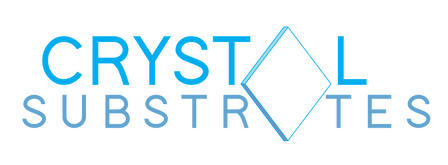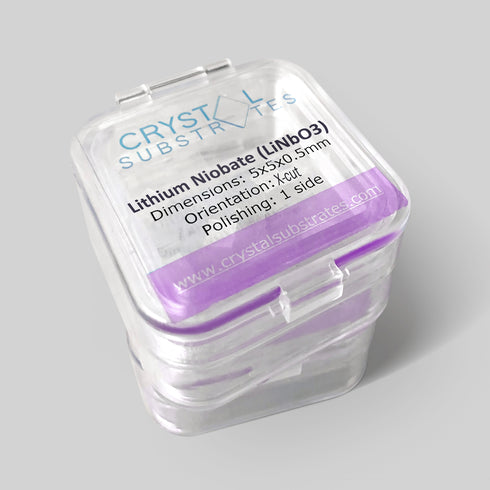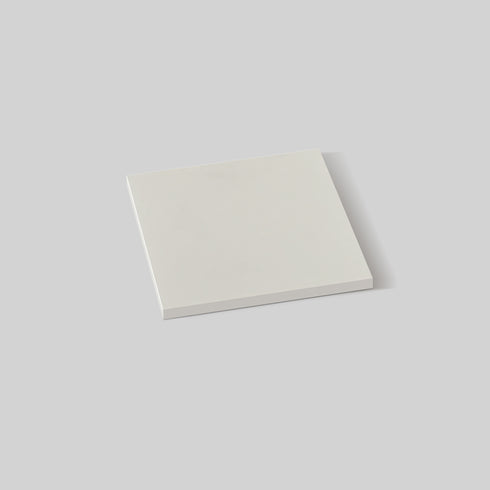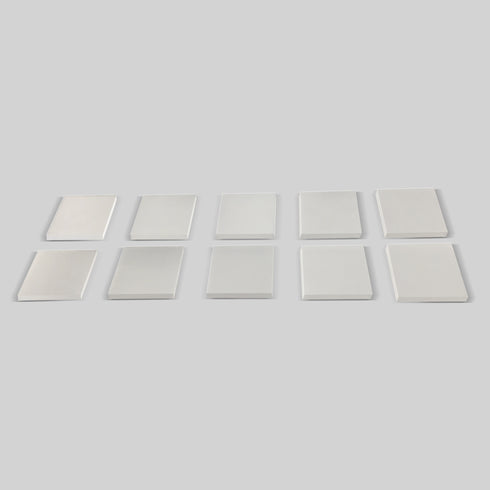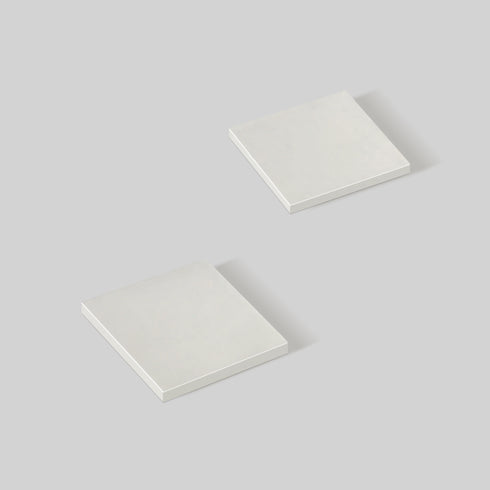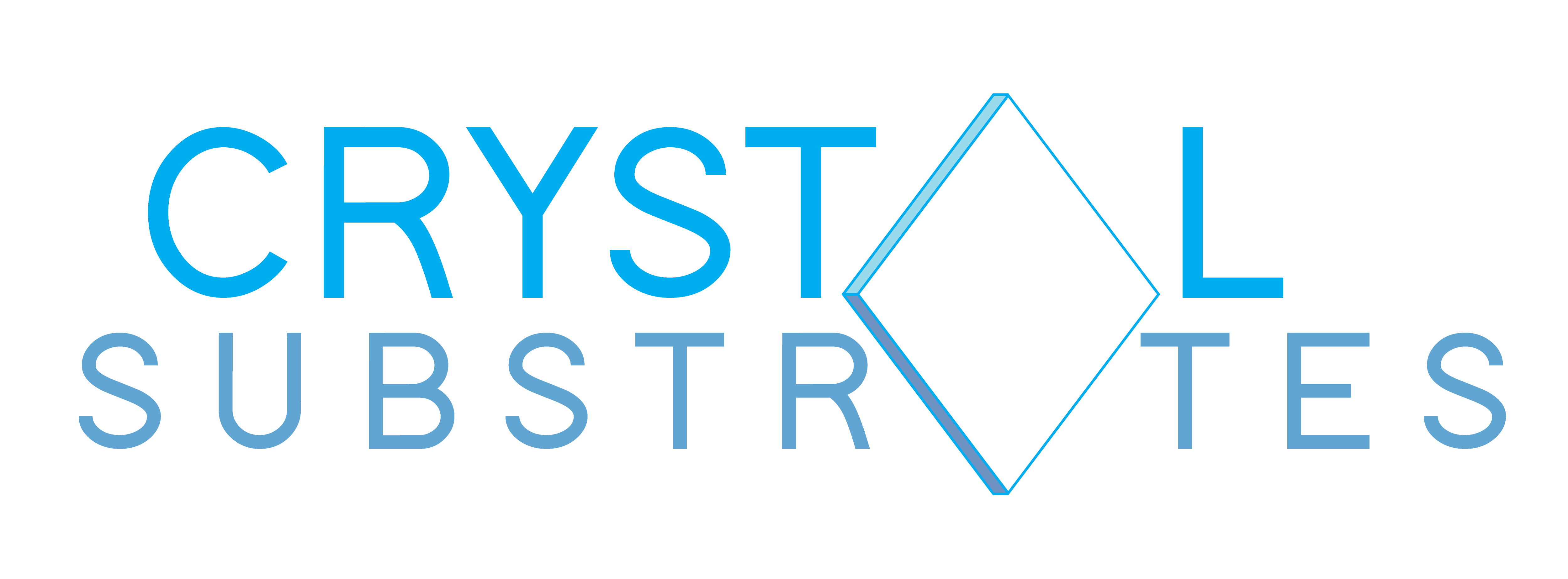Need something else?
Click here to tell us your requirements
We can make LiNbO3 substrates in all of these common sizes: 5x5mm, 10x10mm, 20x20mm, 2”, 3”, 4” diameters. Please get in touch if you would like a quote for another size. LiNbO3 PPLN is also available.
- Name: LiNbO3, Lithium Niobate Single Crystal Substrates
- Lattice parameter:a= 5.418Å, c= 13.863 Å
- Crystal Structure: Trigonal
- Commonly used as substrate for: Surface acoustic wave (SAW) devices, ZnO, YBCO,
- Surface Roughness: Ra <0.5 nm (measured 5x5 µm AFM scan)
- Available Dimensions: 5x5 mm to 4 inch diameter and customized
- Single or double side polished
- Cut to order (3 weeks)
Common orientations of LiNbO3 wafers are Z-cut (0001), X-cut (11-20), Y-cut (10-10) and Y-X cut
This is the different nomenclature referring to the surface acoustic wave properties of the material for which this material is best known and commonly used in single crystal form. Z-Cut is the most common, X-Cut quartz are cut at an angle of 35 degrees to the Z axis. Y cut are cut at an angle of 90 to the Z axis

Lithium niobate (LN) is a ferroelectric material with excellent electro-optic, nonlinear, and piezoelectric properties. Lithium niobate crystals are technically important materials for optical waveguides, mobile phones, piezoelectric sensors, optical modulators and various other linear and non-linear optical applications. It is transparent for wavelengths between 350 and 5200 nanometers.
As it is commonly used in devices, this synthetic material is readily available in single crystal form up to 4 inch diameter and has been used as a substrate for many thin films for example YBCO and ZnO. most commonly however, LiNbO3 used to make devices due to it interesting properties: .e. Electro-optical modulation, Q-switching and Laser frequency conversion of wavelengths (>1 µm).
Periodically poled lithium niobate (PPLN) is a domain-engineered lithium niobate crystal, used mainly for achieving quasi-phase-matching in nonlinear optics. The ferroelectric domains point alternatively to the +c and the −c direction, with a period of typically between 5 and 35 µm. The shorter periods of this range are used for second harmonic generation, while the longer ones for optical parametric oscillation. Periodic poling can be achieved by electrical poling with periodically structured electrode. If you need PPLN then please email us with your requirements.
LiNbO3 wafers are a good choice for generating nonlinear signal, sum frequency or second harmonic generation
LiNbO3 X-cut (11-20):
X-cut lithium niobate is a material with a crystalline structure that has been cut along the x-axis. This crystal can be used in a variety of optical and acousto-optical applications such as frequency-shifting, phase modulation, and waveguide fabrication.
In an X-cut crystal, the electric field is applied along the X-axis. The Miller indices (11-20) correspond to the crystallographic directions in terms of the Miller indices (hkl). In this case, it means the cut is made along the crystallographic direction [1120]. This cut is often used in various optical devices.
LiNbO3 Y-cut (10-10):
Y-cut lithium niobate is a material with a crystalline structure that has been cut along the y-axis. This crystal can be used in a variety of optical and acousto-optical applications such as optical switching, polarization manipulation, and optical parametric generation.
In a Y-cut crystal, the electric field is applied along the Y-axis. The Miller indices (10-10) correspond to the crystallographic direction [100]. This cut is often used in applications where a specific refractive index is required.
LiNbO3 Z-cut (0001):
Z-cut lithium niobate is a material with a crystalline structure that has been cut along the z-axis. This crystal can be used in a variety of optical and acousto-optical applications such as second harmonic generation, wavelength conversion, and optical parametric oscillation. The different experimental set up requirements for each of these types of lithium niobate depend on the specific application. For example, an experiment requiring second harmonic generation would need a z-cut lithium niobate crystal, while an experiment requiring frequency-shifting would need an x-cut lithium niobate crystal. In general, the experimental set up requirements for each type of lithium niobate will depend on the application and the specific parameters of the experiment.
In a Z-cut crystal, the electric field is applied along the Z-axis. The Miller indices (0001) correspond to the crystallographic direction [0001]. This cut is commonly used for nonlinear optics and acousto-optic devices.
LiNbO3 Y-X-cut:
Y-X cut lithium niobate is a material with a crystalline structure that has been cut with the surface parallel to the Y-axis, and the propagation direction along the X-axis. This orientation is frequently used in optical and surface acoustic wave (SAW) devices, particularly for wave propagation control, electro-optic modulation, and frequency filtering.
In a Y-X cut crystal, the electric field is applied along the X-axis while the Y-axis defines the orientation of the cut. The Miller indices (10-12) correspond to the crystallographic direction [1012]. This cut is often chosen in applications where specific acoustic or optical properties, such as velocity matching or polarization control, are required.
LiNbO3 Y-X cut 36°, Y-X cut 64° and Y-X cut 128°.
For Y-X cut substrates / wafers there is a defined cut angle as well. Y-X cut 36°, Y-X cut 64° and Y-X cut 128°. The first letter corresponds to the starting position of the wafer and the second letter is the axis which the it is rotated about and the angle, is how far it is rotated about this axis. So for Y-X 128 degrees, we start at the Y plane and rotate the crystal about the X-axis 128 degrees and the cut is made at this point. Shown in blue in the image below. 36 deg Y-X cut with flat orientation: X cut (11-20).

For Y-X 128 degrees, the, Primary Flat is normal to the X axis, the secondary flat is 90 degree clockwise from the primary flat when viewing the polished face <+Z/-Y>

Trigonal Crystal System:
LiNbO3 is a member of the trigonal crystal system so is denotes in hexagonal (4 indices) format.
In this arrangement, the Z-axis is perpendicular to both the X and Y axes. However, the X and Y axes are not necessarily perpendicular to each other; they are oriented in the plane perpendicular to the Z-axis.
Below is a good schematic, although in 3-indices notation:-

Below is a schematic description of X-Y cuts, common for SAW applications -

For more information I recommend this paper on SAW applications "Surface AcousticWave (SAW) Sensors: Physics, Materials, and Applications, Debdyuti Mandal and Sourav Banerjee"
If you have any questions please contact us on info@crystalsubstrates.com
Dr Joseph Franklin
| LINEAR FORMULA: | LiNbO3 |
| PURITY: | >99.99% |
| CRYSTAL ORIENTATION: | (100), (110) & (111) |
| GROWTH METHOD: | Czochralski method |
| CRYSTAL STRUCTURE: | Trigonal system |
| LATTICE CONSTANT: | a=b=5.148Å c=13.863 Å |
| MELTING POINT (°C): | 1250℃ |
| THERMAL EXPANSION COEFFICIENT (/K): | A11=15.4 x 10-6/k, a33=7.5 x 10-6/k |
| HARDNESS: | 5 |
| MOLAR MASS (G/MOL): | 147.846 g/mol |
| DENSITY (G/CM3): | 4.64 g/cm3 |
| REFRACTIVE INDEX: | No=2.286 ne=2.203 (632.8nm) |
| SIZES: | 5x5mm & 10x10 mm |
| TYPICAL THICKNESS: | 0.5mm |
| SIZE TOLERANCES: | +/- 0.1mm |
| THICKNESS TOLERANCES: | +/- 0.015mm |
| ORIENTATION PRECISION: | +/-0.5 degree |
| POLISHING OPTIONS: | SINGLE SIDED (1SP) OR BOTH SIDES POLISHED (2SP) |
| ROUGHNESS RA: | <0.5nm |
| ELECTRO-OPTIC COEFFIEIENT | γ13=8.6,γ22=3.4,γ33=30.8,γ51=28.0,γ22=6.00(pmv-1) |
| SPECTRAL TRANSMISSION RANGE | 370 - 5000nm >68% (632.8nm) |
| NON LINEAR COEFFICIENT | d22 = 2.1 pm/V |
coming soon.
How long does it take for you to ship out after purchase? In-Stock Substrates are held in our US warehouse and we aim to have substrates shipped out within 24-48 hours.
Pre-Order Substrates are manufactured and delivered in 3-4 weeks.
How much is shipping? All substrates are shipped free of charge within the USA. This shipping takes approx 4-5 days to arrive once shipped.
Expedited delivery? Faster delivery options are available. Below are some indicative prices. To get the cost for your package and location, just add your address at check out and select the shipping option you want to check.
- USA FedEx 2 day delivery: typically $25 USD
- USA FedEx Overnight Delivery: typically $65USD.
- Canada FedEx International Priority: typically $25 USD.
Europe and UK Delivery? Approx cost for delivery is 50 Euros. Shipping costs will be calculated at check-out based on your address or please complete the quote form and we will email you the price. VAT and customs charges are payable by the buyer.
Rest of Worldwide Shipping? Shipping costs to the rest of the World, will be calculated at check-out. Please be aware that delivery times and tracking information vary for each country. Customs charges may apply if shipping outside of the US and are payable by the buyer.
How can I place an order? The quickest way to get your item is to buy through the website – the order is automatically picked up in our system and in stock items ships out asap.
We can accept purchase orders for established universities and companies and are happy to work with your institutes payment systems if required (although please note we are a small company so would prefer pre-payment via our website for small or one-off orders).
We have flexible payment options and can give you a quotation in any of the following currencies (USD $, CAD $, GBP £, EUROS € AUD $).
You can download a copy of our W8 form here.
What payment options do you provide? Crystal Substrates accepts the following payment methods:
- Bank Transfer into USA bank account.
- Credit Card: Visa, MasterCard, Discover, American Express, JCB, Visa Electron.
- Crystal Substrates offers a Fast Checkout option, allowing you to securely save your credit card details so that you don't have to re-enter them for future substrate purchases.
- PayPal: Shop easily online without having to enter your credit card details on the website.Your account will be charged once the order is completed.
- Sorry we do not accept payment with check.
Do you send substrates to Europe? Yes, we have many long term customers buy from all over Europe including France, UK, Germany, Italy, Norway, Netherlands. Please buy through the website or get in touch if you need a specific substrate.
We believe we have the cheapest and best quality products in the USA. If you find another US company with a lesser price (including delivery) we would be happy to price match.
Selling to 1000+ research labs worldwide, including...

Looking for a custom substrate?... Need technical help?



Drop Us A Line
We’re happy to answer any substrate questions. To help us out let us know your preferred orientation, quantity, polishing and size requirements.
Free Shipping.
on all US orders across any product category qualify.
Payment Methods.
Credit Card: Visa, MasterCard, Maestro, American Express.
Customer Service
Email us with your questions or requirements.
